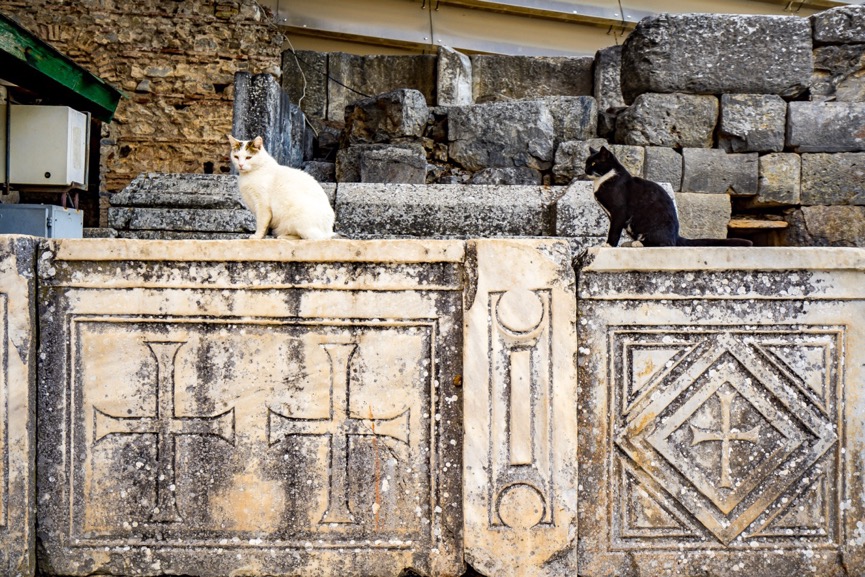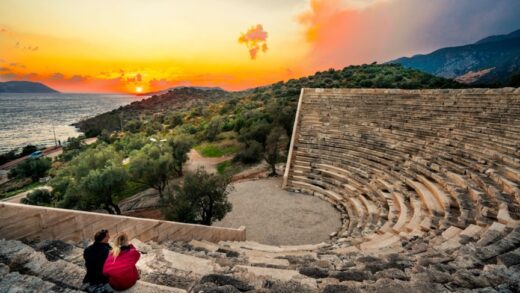When you think of Turkey, you may think of the aroma of kebab on rotisseries, but not many people associate it with its rich history. However, Turkey has preserved a large number of millennia-old monuments, and one of the most famous is Ephesus, located on the Aegean coast.
As the second largest city in the Roman Empire after Rome, Ephesus is one of the largest archaeological sites in the entire Mediterranean, despite the fact that only 15% of the original city area has been excavated. The elaborate halls and pavilions and the wide, smooth marble streets bring to life a portrait of the life of the first people of the Mediterranean 2,000 years ago.
The story (in Chinese) was first published in World View magazine, Issue 10/2022.
This English version was translated from the Chinese original with DeepL, with the manual correction of some obvious mistranslations. I apologize for any mistakes made by this AI translation tool.
Contents
Temple of Artemis – One of the Seven Wonders of the Ancient World
The epic Ephesus was born out of a somewhat fantastical story: in the 10th century BC, Androklos, an Athenian prince, was forced to travel far away after the death of his father. He first went to Delphi, known for its oracles, and asked Apollo there, where he could find a city of his own, and received the answer, “Fish and boars will show you the way.”
He took the oracle on a quest that led him to the eastern coast of the Aegean Sea, in what is now Asia Minor, a region of Turkey. One day, while roasting fish on the beach, the live fish that he had thrown into the fire broke free and jumped out, setting fire to a nearby bush and causing a wild boar hiding in it to flee in fear. Androclus hunted down the boar and built the city he had dreamed of.

Although it is a beautiful legend, the story is thought to actually depict the first Greek migration of the same period: the Ionians, who had lived in the Peloponnese for generations, were forced to leave their homeland and settle in Asia Minor due to frequent warfare.
Artemis is the goddess of the moon, a symbol of Greek mythology. She was the daughter of Zeus and sister of Apollo. The Temple of Artemis in Ephesus is located outside the city, yet it dates back to the Bronze Age, which is older than the Greek settlers. Originally, it may have been a temple to the local Amazons, and it was only after the Greek settlers arrived here that it was converted to Artemis, who was considered the patron god of the city. The first temple is recorded to have been destroyed by a flood in the 7th century BC, and another was built on the site until 356 BC, when it was burned down by the young man Hierostates, who wanted to make a name for himself. It is still used in English as “herostratic fame”, to describe people who will do anything to make a name for themselves.
A third and more magnificent temple was broken in 323 B.C. This is the one listed among the Seven Wonders of the Ancient World. In the 1st century A.D., the Roman historian Pliny the Elder recorded in his biographical work Natural History that it was “325 feet (96 meters) long, 225 feet (67 meters) wide, 60 feet (18 meters) high, and had 127 massive stone columns ” The Antipater of Sidon, a 2nd century B.C. Greek poet, described it in more sentimental terms as the most glorious one of the Seven Wonders.
I have set eyes on the wall of lofty Babylon on which is a road for chariots, and the statue of Zeus by the Alpheus, and the hanging gardens, and the colossus of the Sun, and the huge labour of the high pyramids, and the vast tomb of Mausolus; but when I saw the house of Artemis that mounted to the clouds, those other marvels lost their brilliancy, and I said, “Lo, apart from Olympus, the Sun never looked on aught so grand”.
Antipater, Greek Anthology IX.58.

The statue of Artemis was undoubtedly the centerpiece of the temple, but unfortunately it has long since disappeared. Two 1st-century marble statues of Artemis were unearthed at the site of the town hall of Ephesus (Prytaneion) and are now on display at the Museum of Ephesus in Selçuk, where they may reveal what the goddess really looked like in the temple – and how different they were from all the other gods of ancient Greece. The images of the other ancient Greek gods are all very different.
One of the statues has lions depicted on the left and right shoulders, suggesting a possible link with Cybele, the goddess often accompanied by lions in traditional Anatolian beliefs, while the most striking feature of the statue is the dozen ovoid objects dangling from the chest. Although some claim that they are merely ornaments, most people are convinced that they are the breasts used by the goddess to nurse her creatures.
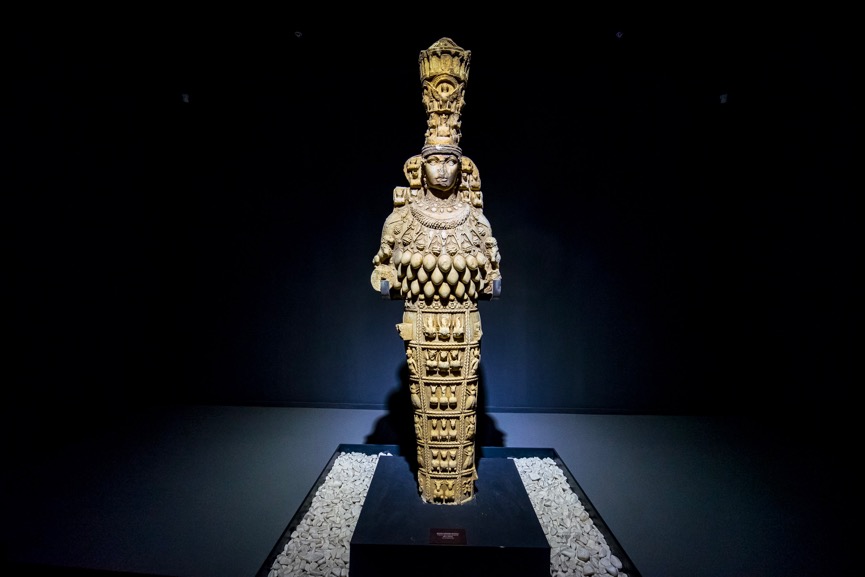
The statue was created in the 1st century AD, the last glory days of the temple – just about the same time that Christianity came to Ephesus, permanently changing the fate of the temple and the faith of Artemis.
In the Bible, Acts 19, the story is told of St. Paul, a Christian apostle who came to Ephesus in the 1st century AD to preach. By preaching the doctrine of forbidden idolatry, he angered the community of craftsmen in the city who made their living by building silver niches for the goddess Artemis. The people, who had been worshipping the goddess for generations, gathered in the theater at the instigation of the craftsmen and shouted angrily, “Great is Artemis of the Ephesians!” for two hours. Fortunately, the leaders of the city relieved Paul, explaining that he had not blasphemed the goddess, and the crowd gradually dispersed.
Paul, however, did not give up his efforts to spread Christianity in Ephesus. Even later, when he was imprisoned in Rome for “spreading the forbidden religion”, he wrote the book of Ephesians (10th book of the New Testament) to explain Christian doctrine to the local people.
We do not know whether the “theatrical assembly” really took place, or whether the book of Ephesians was actually written by Paul. But what is certain is that Christianity gradually became dominant in Ephesus and throughout the Roman Empire, and with the promulgation of the Edict of Milan and the Edict of Salonica in the 4th century AD, Christianity was transformed from an underground church that had been rejected and suppressed into the state religion of the empire, and the final death knell of the Artemis faith in Ephesus was officially sounded. The temple was abandoned, the statues were destroyed, and the massive stones that made up the temple were removed one by one for other buildings.
Today, all that remains of the Temple of Artemis is a pile of rubble hidden behind a dense copse of trees along the roadside. The only surviving stone pillar stands alone in the middle of the site, resembling a mournful monument. In fact, even this pillar was pieced together by archaeologists using different fragments of stone pillars unearthed during excavations. After a thousand years of weather, there are too few remnants left, and visitors can only imagine the majesty of the “Seven Wonders” by looking at the restored drawings on the site.
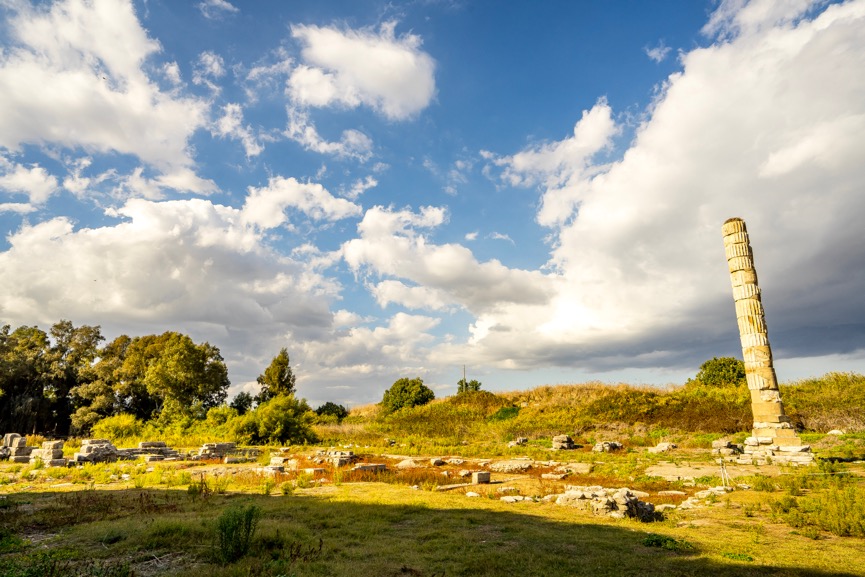
The Amphitheatre and the Library, the spiritual life of our ancestors 2,000 years ago
Fortunately, most of the remains of the city of Ephesus have miraculously survived. Not far from the visitor entrance on the northern side of the site today is the largest building that Ephesus once had: the Amphitheatre. With a capacity of over 20,000 spectators, it was the largest known semi-circular theatre in the ancient Mediterranean.
Built in the Hellenistic era around the 3rd century B.C., the theatre’s location on the hill is typical of ancient Greek theatres, yet the building’s decorative elements are replete with Roman-era forms, meaning that it was the most important meeting place in Ephesus from Hellenistic times to the Roman Empire – -The Biblical story of Paul and the silversmith, if true, must have taken place in this theatre.
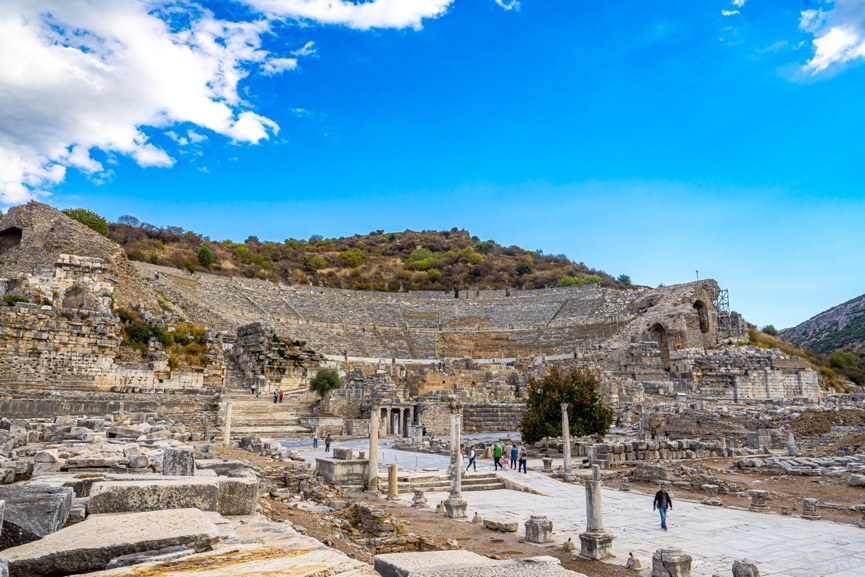
Even after 2,300 years, the theatre remains surprisingly largely intact and even hosts occasional performances. No words can describe the sheer size of the theatre, yet standing in any corner of the theatre, the viewer immediately understands what a glorious civilization Ephesus once had.
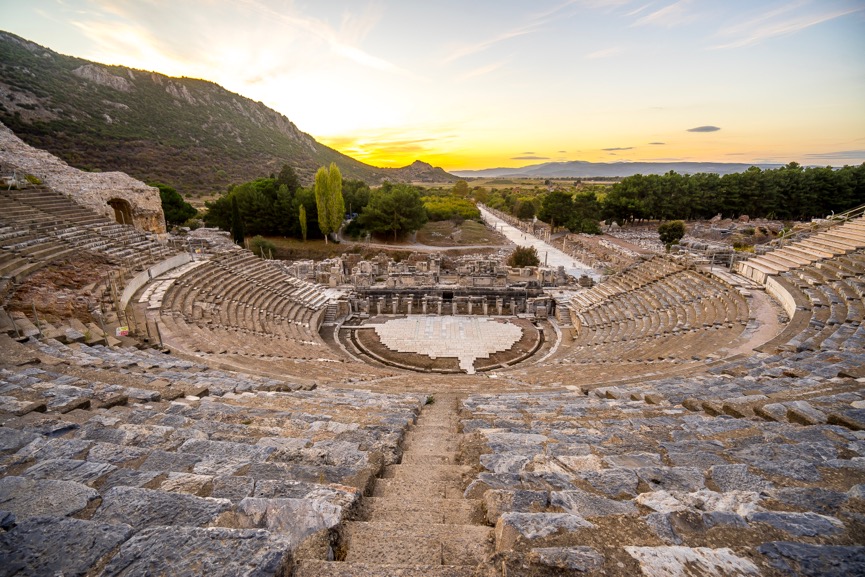
The Celsus Library, at the end of Marble St., is more of an academic ivory tower than the often noisy theatre. An inscription on the entrance steps states that it was built in 112 AD by the Ephesian consul Gaius in memory of his late father, Celsus, who was governor of Asia in the Roman Empire. It is estimated that some 12,000 sedge scroll books were once stored in niches recessed into the walls on the upper and lower floors, in a collection of some 180 square meters. The biggest difference from contemporary libraries is that patrons who came here could read and transcribe the books indoors, but could not lend them out – all the collection was made by human transcription on sedge paper, which was simply too costly and fragile.
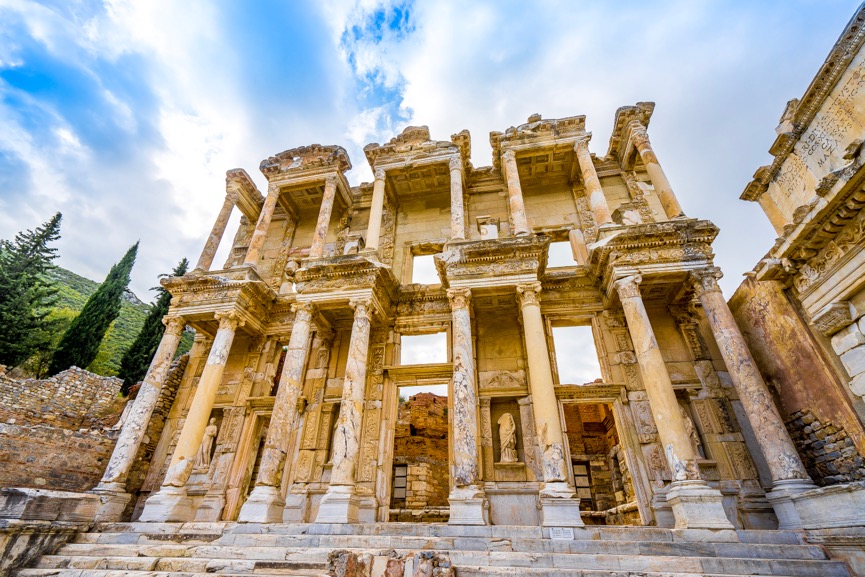
As one of the three major libraries of ancient Rome and the only one to survive, the Celsus Library today, with its stately form and near-complete façade, is hard to believe that it has survived for almost 2,000 years. In fact, a fire in 262 A.D., the cause of which is still unknown, destroyed the library’s entire collection and much of its structure, while an earthquake around 1000 A.D. caused the only remaining facade to crumble into the dust. In the 1970s, in the midst of this millennia-old rubble, archaeologists miraculously found most of the pieces that made up the façade, restoring it to its former glory.

Under a huge protective roof, known as the Terraced Houses, lie seven of Ephesus’ most luxurious residences. In the middle of 20th century, the remains of several incredibly well-preserved dwellings were unearthed here, followed by the installation of walkways designed by Austrian experts to take visitors up and down the different levels of the buildings – nowhere else in the world, except in and around Pompeii, Italy, can you get a more Nowhere else in the world, except in and around Pompeii, Italy, can one get a more immersive feel for the extreme luxury of the rich in ancient Rome.
The house is built on a hill and all seven dwellings are connected as one. One of the most striking features is the mosaic mosaics that cover almost the entire interior floor. The more than 100 mosaics that have been discovered so far include simple decorative figures, but also a variety of flora and fauna, ancient Greek and Roman mythological scenes or characters. A closer look reveals that the walls around the room are also covered with frescoes that are still visible: the winged Eros, the Greek god of love, is depicted in flight. The walls are also covered with graffiti written by successive occupants, and even include a shopping list.

The bigger secret is hidden beneath the tiles and walls: an intricate network of terracotta pipes and underground steam channels means that the inhabitants here enjoyed complete plumbing and underfloor heating as far back as 2000 years ago. Ephesus had one of the most complete water supply systems of any ancient city ever discovered. Four giant aqueducts carried water from the surrounding mountains to the city, where it ran day and night. The whole process relied on gravity and consumed no energy, making it a veritable running water system. The remains of these near-complete aqueducts can still be easily found outside the town of Selçuk, stretching out like a dragon.
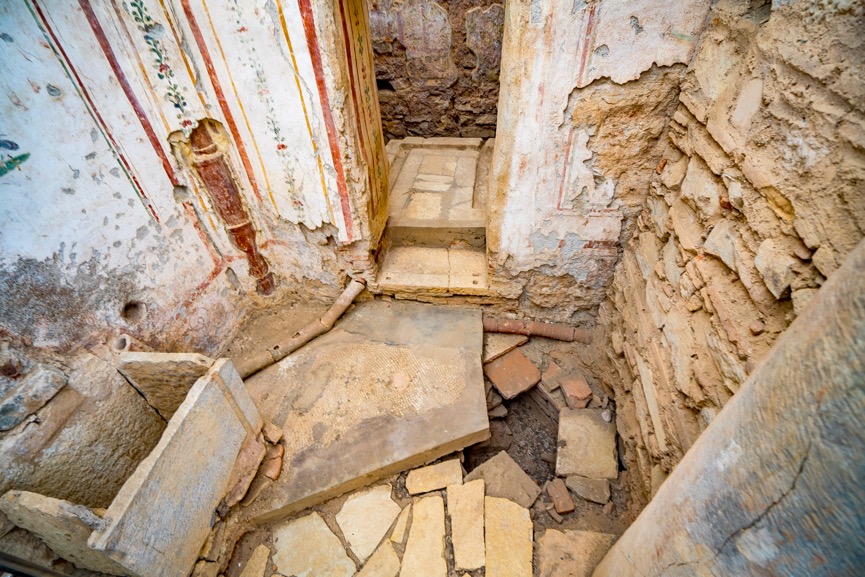
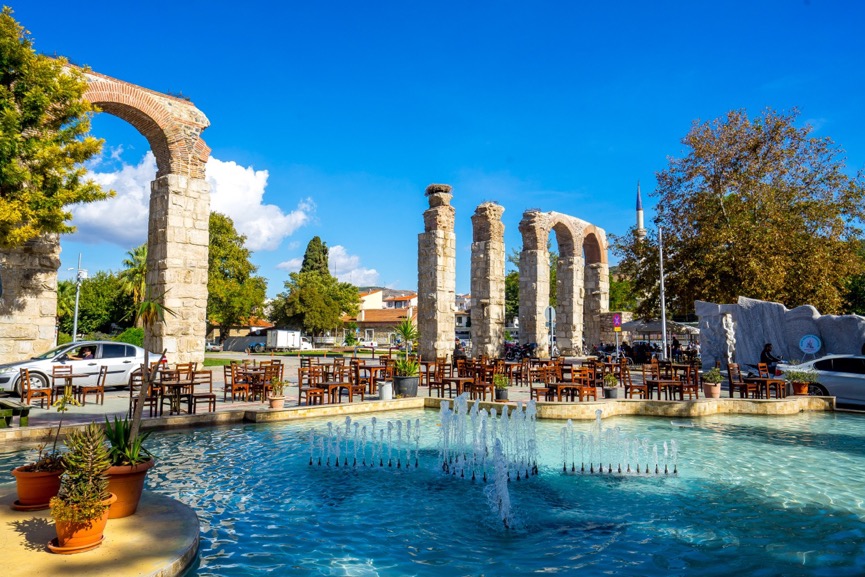
In addition to running water partially through private homes, outdoor fountains and public baths were brought in so that everyone could enjoy a convenient and relatively clean source of water. The Ephesians even had a public toilet that was flushed with running water. 36 pear-shaped pits, similar in shape to today’s toilet rings, were closely and evenly distributed on three marble slabs placed along the walls without any partitions between them. These were the toilets of the day.
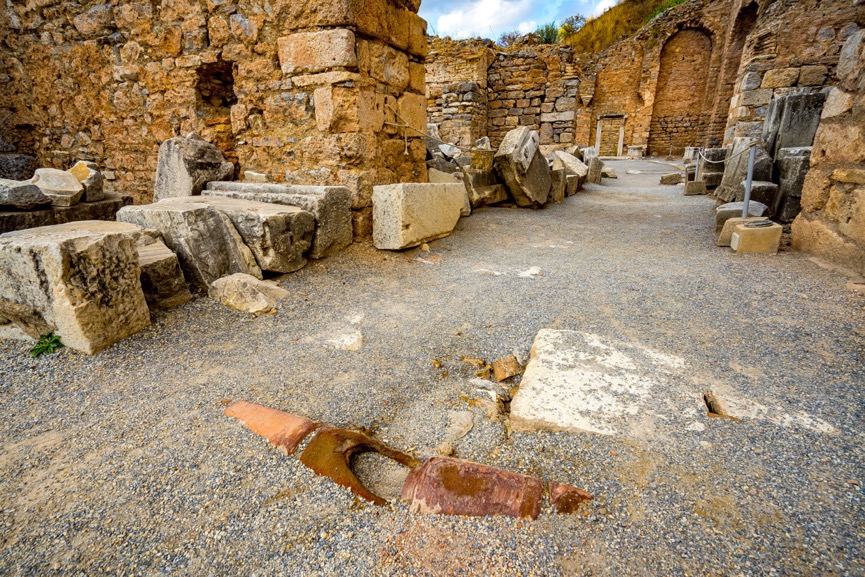
Today’s latrine sites have clean, new surfaces, and visitors don’t feel the odor or dirt at all, but back then the environment was far from perfect: although the water flowing under the pits carried away some of the dirt, the fecal matter on the walls of the pits and even on the toilets made the environment as stinky as today’s pit toilets. Perhaps people back then would have used spices to mask some of the odor, but more likely: the toilets were used to it. Toilet paper didn’t exist either – according to the ancient Greek philosopher Seneca, what people used to clean themselves after defecating in those days was usually a communal stick with a natural sponge tied to the end and soaked in a bucket of vinegar or salt water.

Modern public toilets were for both men and women, but only men’s toilets exists in Ephesus. At a time when urban sanitation was not yet a reality, the public toilets were not designed to avoid open defecation, but were more of an “information station” for the men of the city to communicate with each other. It is even believed that even the rich men who lived in the terrace houses across the street would sometimes leave their private toilets, which were cleaned by slaves, and come here to find out the latest news.
No one knows how much fresh gossip was circulated here, but just imagine: a group of old men huddled side by side in a filthy pit, laughing in the midst of a room full of stench. The comical scene is enough to make modern people accustomed to clean surroundings and private space laugh.
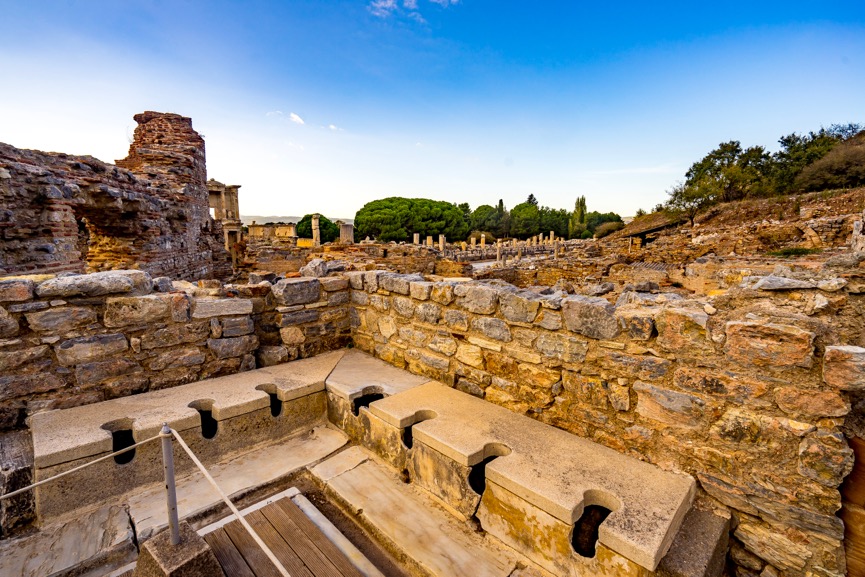
Ephesus was once a busy port city, and it was perhaps the constant flow of seafarers arriving on shore that gave rise to another informal industry: brothels. Archaeologists have found a well-preserved statue in the city (the original of which is now in the Ephesus Museum) with an exaggeratedly large phallus, which is believed to be Priapus, the ancient Greek god of fertility. The site where it was unearthed, the site of a building with an ornate colonnade, has been identified as a brothel.
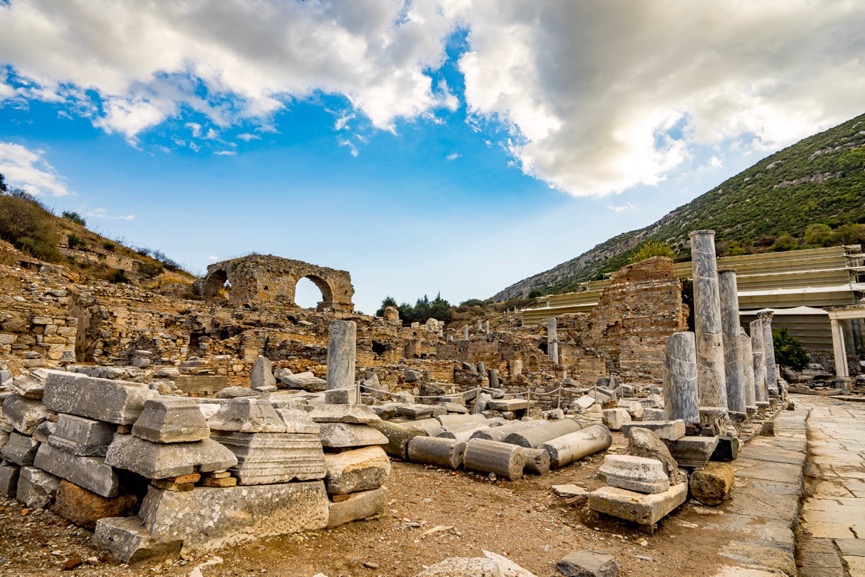
Unlike contemporary brothels, which mostly operated in secret, the brothel in Ephesus was not only open to the public, but even had “a billboard” in the city: an outline of a footprint was clearly visible as an icon on the marble pavement. Next to the footprint is a small circular hole and several different designs, including a heart, a rectangle and a sketch of what looks like a woman’s head.
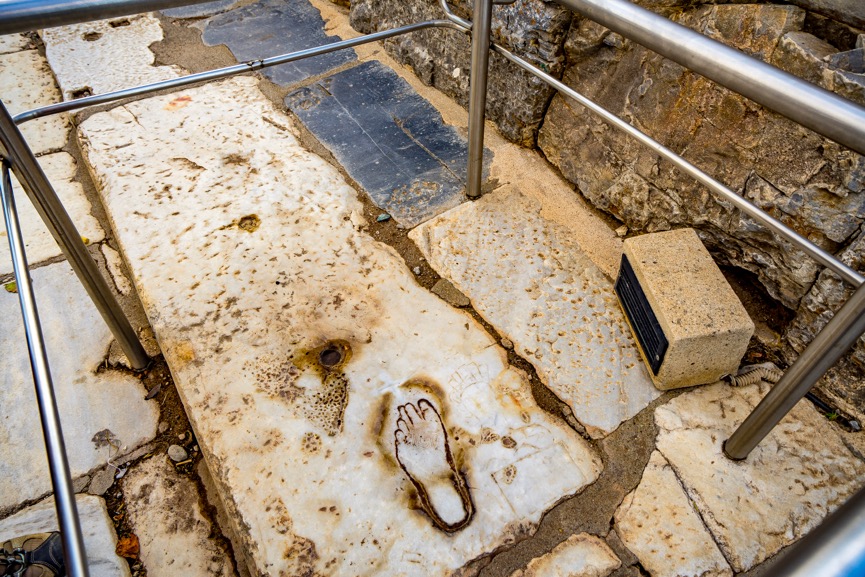
The exact interpretation of its meaning is currently disputed. One of the most popular is that the heart shape with the woman’s head represents the brothel, the rectangle represents the general direction of the brothel (near the library), the footprint refers to the minimum age required for admission (it needs to be larger than the foot in the footprint), and the small round hole represents the price per service – the hole needs to be filled with coins.
The Silted Port and the Decline of Ephesus
The prosperity of Ephesus began with devotion to the gods but ended with the relentless changes of nature. an earthquake in 614 destroyed a large number of buildings in Ephesus, but what left the city in ruins eventually came from a slow process: the silting up of the harbor.
A visitor to Ephesus today, standing on what was once the “harbour road”, must look far into the distance to find the outline of the sea at the end of his or her sight. Over the past thousand years, sediment has accumulated outside the port of Ephesus, which is now five kilometers away from the coastline. Like every resource-based city that has lost its resources, shops have closed, residents have moved away, and the mud has gradually obliterated the once bustling streets, leaving Ephesus finally a deserted place.

In the 14th century A.D., the crusaders came expectantly to this city, said to be full of treasures, ready for an unbridled plundering, but were greeted only by a dead Turkic village. The mud that covered the ancient city thus became the best protector of Ephesus. Had it not been for this natural protection, archaeologists in the 19th century would probably not have had the opportunity to discover such a well-preserved “underground city”.
